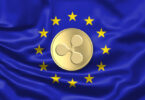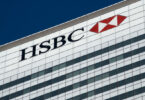The International Monetary Fund (IMF) recently published a paper exploring potential choices between central bank digital currency (CBDC), faster payment systems (FPS) and e-money. Given the IMF’s focus on emerging markets, it highlights the threat to monetary sovereignty of dollar stablecoins and foreign CBDCs.
As always, local circumstances and priorities will influence choices. However, in many economies the three types of payment systems are expected to coexist in the future. The combination of different systems removes any single point of failure, helping to ensure resiliency.
All three types provide efficient instant payments. And they can all enhance financial inclusion, although technology can be a barrier for some users.
Unique advantages of CBDCs
However, the IMF views CBDC as having two unique benefits. By far the largest is ensuring retail access to central bank money continues as cash usage declines. It highlights the downward spiral with cash. As people use it less, fewer merchants remain willing to accept it.
Access to a CBDC addresses the two key monetary sovereignty threats of stablecoins and foreign CBDCs.
“Although stablecoins have not gained much use outside of crypto-asset ecosystems in advanced economies, preliminary data suggest that in emerging and developing market economies, they are being used in a limited capacity for cross-border transactions and remittances (FSB 2024). The same analysis also suggested that there was a perceived preference for US dollar-denominated stablecoins as a store of value in countries with high inflation, currency devaluation, or the presence of capital flow measures,” the authors wrote. They warn that if there’s significant adoption, a stablecoin could start being used as an alternative unit of account.
The other area where it believes a CBDC can help is competition. A private FPS could inhibit competition, and most e-money systems are closed loop and could become monopolistic.
By contrast, the IMF believes that a CBDC can lower the barriers to entry for nonbank payment service providers, enhancing competition.
Meanwhile, other recent IMF papers on CBDC have explored incentives for adoption and privacy.






